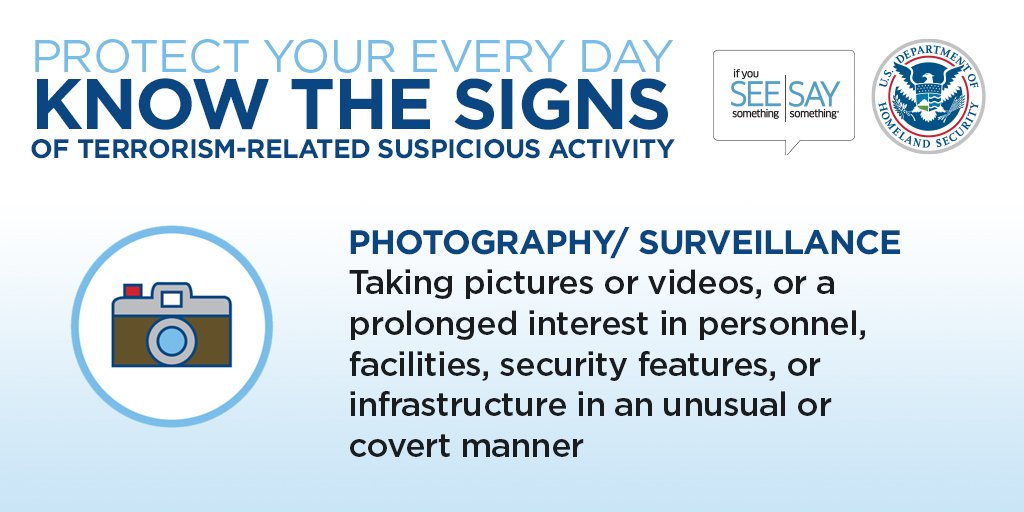Photojournalists, beware: The US Department of Homeland Security has its eyes on you. The agency tweeted Monday: "Know the signs! Did you know photography and surveillance could be a sign of terrorism-related suspicious activity? If you notice this, be sure to report it to local authorities.
Such expansive language is problematic under the First Amendment. “When you look at what DHS identifies as the signs [and objects] of suspicious photography—‘personnel, facilities, security features, or infrastructure’—it basically leaves squirrels as the only thing that’s safe to photograph,” says Frank LoMonte, executive director of the University of Florida’s Brechner Center for Freedom of Information. “That’s a pretty breathtakingly broad inventory.”
LoMonte says a chilling effect often occurs when police show up and question a photographer for simply making pictures, even if no arrest or charges follow. “Being forced to justify why you’re outside of a federal building with a camera is intimidating,” he says.
A DHS spokesperson told me the tweet is part of the “If You See Something, Say Something” campaign, which is supposed to raise public awareness of terrorism indicators and the value of reporting suspicious activity to law enforcement. DHS launched the campaign in 2010, though its origins trace back to 9/11 [...].
Notably, the First Amendment prohibits government agents from taking any action intended to dissuade a person from exercising constitutionally protected rights, and generally that includes the taking of photos in public spaces for journalistic and other purposes.
“One of the real problems with this ongoing campaign,” says Mickey Osterreicher, the general counsel of the National Press Photographers Association, “is that by listing [photography] in a leading way as an example of suspicious activity, rather than just requesting citizens to report suspicious activities, [DHS is] planting a seed of fear and suspicion about otherwise innocuous behavior” [...].
“I’d be real curious to see the research telling us that terrorists are prone to stand on public sidewalks conspicuously filming their intended targets ‘in a prolonged manner,’” LoMonte says. “This just seems like an invitation for people who don’t like journalists to sic the cops on them.”
To read Peters' article in its entirety, click HERE.

No comments:
Post a Comment